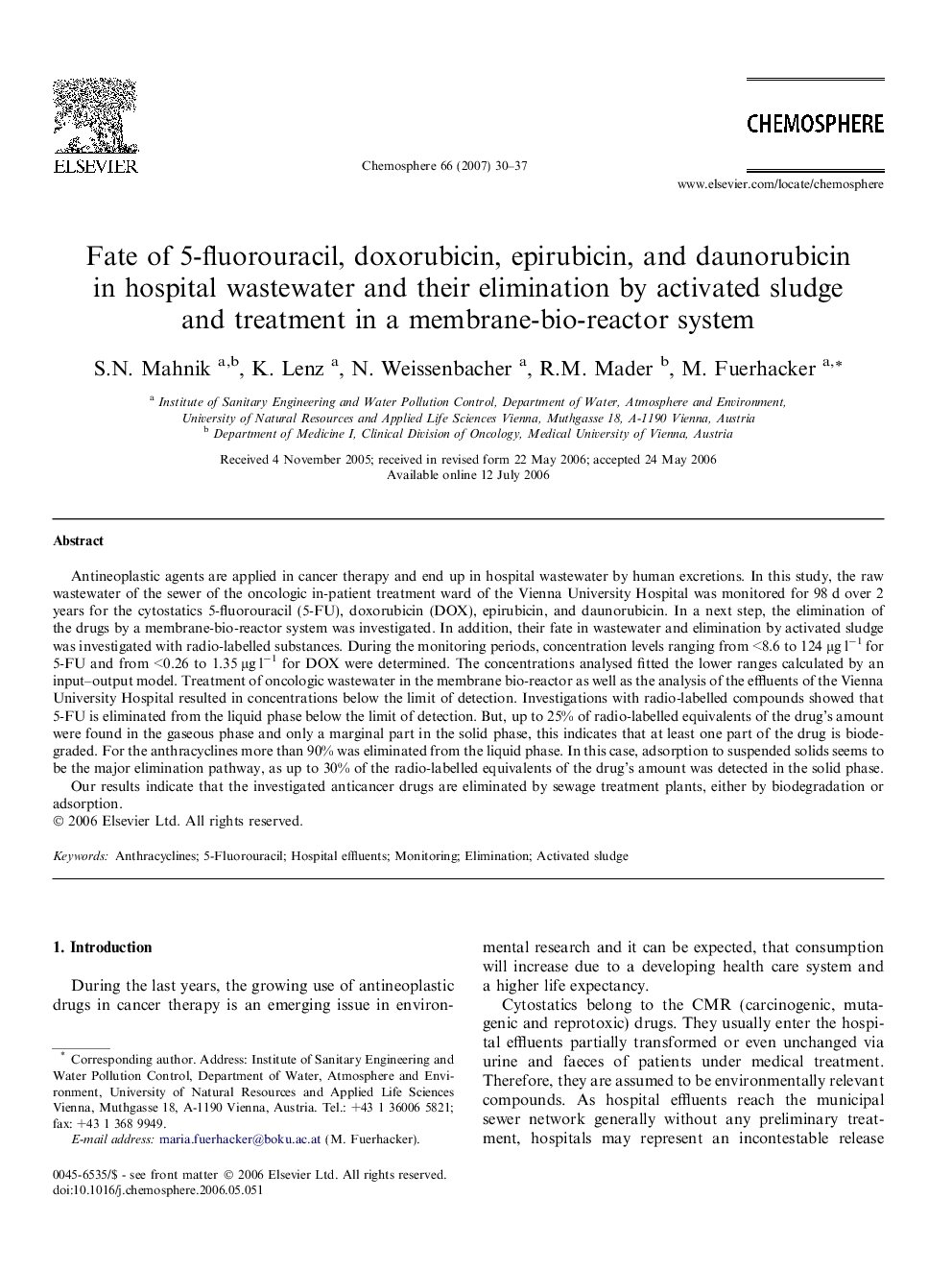| Article ID | Journal | Published Year | Pages | File Type |
|---|---|---|---|---|
| 4416483 | Chemosphere | 2007 | 8 Pages |
Antineoplastic agents are applied in cancer therapy and end up in hospital wastewater by human excretions. In this study, the raw wastewater of the sewer of the oncologic in-patient treatment ward of the Vienna University Hospital was monitored for 98 d over 2 years for the cytostatics 5-fluorouracil (5-FU), doxorubicin (DOX), epirubicin, and daunorubicin. In a next step, the elimination of the drugs by a membrane-bio-reactor system was investigated. In addition, their fate in wastewater and elimination by activated sludge was investigated with radio-labelled substances. During the monitoring periods, concentration levels ranging from <8.6 to 124 μg l−1 for 5-FU and from <0.26 to 1.35 μg l−1 for DOX were determined. The concentrations analysed fitted the lower ranges calculated by an input–output model. Treatment of oncologic wastewater in the membrane bio-reactor as well as the analysis of the effluents of the Vienna University Hospital resulted in concentrations below the limit of detection. Investigations with radio-labelled compounds showed that 5-FU is eliminated from the liquid phase below the limit of detection. But, up to 25% of radio-labelled equivalents of the drug’s amount were found in the gaseous phase and only a marginal part in the solid phase, this indicates that at least one part of the drug is biodegraded. For the anthracyclines more than 90% was eliminated from the liquid phase. In this case, adsorption to suspended solids seems to be the major elimination pathway, as up to 30% of the radio-labelled equivalents of the drug’s amount was detected in the solid phase.Our results indicate that the investigated anticancer drugs are eliminated by sewage treatment plants, either by biodegradation or adsorption.
